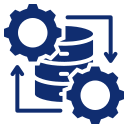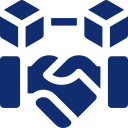Abstract
In today’s hyperconnected world, IoT (Internet of Things) networks are growing exponentially, but they have not yet fully evolved. Devices are more connected, data is more abundant, but value is still trapped in outdated models. This piece presents a radically reimagined framework: Autonomous Device Economies (ADE), powered by blockchain not simply as a ledger, but as a coordination layer for trustless IoT interactions.
Unlike centralized platforms or conventional IoT systems, ADE enables devices to transact, negotiate, and collaborate across organizational boundaries—with privacy, real-time value exchange, and governance built in.
Rethinking IoT: From Data Streams to Economic Agents
Most IoT deployments treat devices as data producers. This model is no longer sufficient. Devices must evolve into intelligent economic actors, capable of:

Managing their own data rights and disclosures

Transacting in decentralized marketplaces

Executing service contracts without human mediation
This transformation is impossible without a trust-minimized architecture, where blockchain enables devices to operate independently, with security, accountability and economic agency baked in.
The Autonomous Device Economy (ADE) Framework
ADE isn’t just an idea; it’s a practical, modular architecture that makes this autonomy possible. Here’s how:

Device Identity Layer
- Every device receives a verifiable on-chain identity.
- Identities are governed using Decentralized Identifiers (DID) or Verifiable Credentials (VC) (and).
- Ownership, permissions, and roles evolve through programmable rules.

Transactional Logic Engine
- Contracts run locally or on edge nodes, ensuring low-latency decision-making.
- Example: A cold storage unit negotiates energy cost contracts with nearby power providers.

Tokenized Exchange Layer
- Devices utilize stablecoins or digital tokens for peer-to-peer transactions.
- Pricing is dynamic, allowing for auction-based access, surge pricing, or prepaid micro-bundles.

Governance & Interoperability Layer
- Multi-stakeholder governance is enforced via smart contracts.
- Devices from different vendors interoperate via standardized schemas, minimizing vendor lock-in.
Use Case Scenarios (Novel & Industry-Spanning)
ADE isn’t limited to one industry or vertical. It unlocks entirely new models across sectors:

Energy-Aware IoT Grids
Smart homes, solar panels, and EV chargers form dynamic microgrids. Devices autonomously trade energy based on usage predictions, weather inputs, and token-based incentives.

Intelligent Equipment Rental
Machines log usage, enforce operator permissions, and trigger real-time payment streams. Leasing becomes pay-per-performance, not pay-per-period.

Decentralized Environmental Monitoring
Sensor clusters deployed for water, air, or soil monitoring validate each other's data and reward verified insights with tokens. This not only deters tampering, but also prevents manipulation and encourages accuracy.

Peer-to-Peer Logistics & Fleet Exchange
Idle trucks or drones offer capacity to others in the network. Smart contracts manage hand-offs, geo-fencing, and incident response without a centralized logistics controller.
Why Blockchain is More Than a Ledger Here
Too often, blockchain is dismissed as overkill for IoT. That’s a misunderstanding of its role.
| Blockchain isn’t just for record-keeping; in ADE, it serves as the coordination layer for autonomous actors. Traditional IoT Model | ADE with Blockchain |
| Centralized data collection | Distributed intelligence on the edge |
| Manual or batch monetization | Continuous micro-payments per service |
| Static roles (sensor/consumer) | Dynamic device-to-device interaction and trading |
| Proprietary vendor lock-in | Open, composable, and governed protocols |
Integration Roadmap
ADE is not theoretical; it’s designed to evolve with maturity:

Phase 1 |

Phase 2 |

Phase 3 |
| Minimal Viable Mesh | Cross-Domain Interoperability | Autonomous Optimization |
|
|
|
Infinite’s Blockchain-IoT Capabilities
Smart Contract Development
Security Audits
Legacy Integration
Consulting & Road mapping
Why Infinite?
- 15+ years of experience in IoT and blockchain implementation.
- Proprietary lightweight blockchain frameworks optimized for edge.
- Strong partnerships with Hyperledger, EEA, AWS IoT, and Microsoft Azure.
- Recognized by Frost & Sullivan and featured in a Gartner case study for a blockchain-based car subscription model.
Conclusion
The convergence of IoT and blockchain is inevitable—but its real power lies beyond tracking and tracing. By enabling devices to participate in economic activity autonomously, the ADE framework reshapes how value is generated and exchanged in the digital world.
Infinite empowers this future, not by replicating existing platforms, but by offering an open, modular, and intelligence-driven foundation for next-generation IoT economies.
